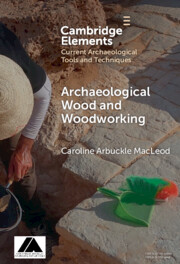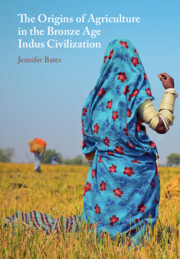Refine search
Actions for selected content:
81 results
Chapter Four - Bones, Teeth, Seeds, Dung, Corrals, and Beyond
-
- Book:
- The Archaeology of Pastoralism, Mobility, and Society
- Published online:
- 04 September 2025
- Print publication:
- 18 September 2025, pp 161-215
-
- Chapter
- Export citation
Stable isotope measurements reveal diverse agricultural management strategies in the Roman Iron Age (1–400 cal AD) southeast Baltic
-
- Journal:
- Radiocarbon , First View
- Published online by Cambridge University Press:
- 27 August 2025, pp. 1-20
-
- Article
- Export citation

Archaeological Wood and Woodworking
-
- Published online:
- 14 March 2025
- Print publication:
- 10 April 2025
-
- Element
- Export citation
Exploring Neolithic resilience and mobility in the Omani interior at Al-Khashbah KHS-A
-
- Article
-
- You have access
- HTML
- Export citation
Climate, political economy and agriculture in first and second millennia AD Anatolia
-
- Article
-
- You have access
- Open access
- HTML
- Export citation
Una cocina para el procesamiento de Chenopodium quinoa Willd. en el poblado alto del pukara El Carmen 1, Tucumán, Argentina (ca. 1200-1450 dC)
-
- Journal:
- Latin American Antiquity , First View
- Published online by Cambridge University Press:
- 23 January 2025, pp. 1-20
-
- Article
- Export citation
Primeras evidencias de cultivo europeo en el sitio Pueblo Guayascate 1 (Córdoba, Argentina): Siglos dieciséis y diecisiete
-
- Journal:
- Latin American Antiquity , First View
- Published online by Cambridge University Press:
- 23 January 2025, pp. 1-16
-
- Article
- Export citation
Eating in colonial institutions: desiccated plant remains from nineteenth-century Sydney
-
- Article
-
- You have access
- Open access
- HTML
- Export citation

The Origins of Agriculture in the Bronze Age Indus Civilization
-
- Published online:
- 13 December 2024
- Print publication:
- 02 January 2025
Taphonomy and labour at the Indus Valley site of Harappa (3700–1300 BC)
-
- Article
-
- You have access
- Open access
- HTML
- Export citation
Grand funerary stelae (2nd–3rd c. AD) of the microregion of Musti (El Krib, Tunisia): an iconographic and epigraphic analysis and the latest eco-factual data (2019–2023)
-
- Journal:
- Libyan Studies / Volume 55 / November 2024
- Published online by Cambridge University Press:
- 13 February 2025, pp. 103-121
- Print publication:
- November 2024
-
- Article
-
- You have access
- Open access
- HTML
- Export citation
Late Bronze Age crops from Çine-Tepecik, western Anatolia: insights into farming and political economy in the lands of Arzawa
-
- Article
-
- You have access
- Open access
- HTML
- Export citation
Variation in the development of Neolithic societies atop the Central Anatolian Plateau: recent results from Balıklı
-
- Article
-
- You have access
- Open access
- HTML
- Export citation
Early animal management in northern Europe: multi-proxy evidence from Swifterbant, the Netherlands
- Part of
-
- Article
-
- You have access
- Open access
- HTML
- Export citation
Variation of millet grain size and cooking techniques across Asia between the late fourth and first millennia BC
-
- Article
-
- You have access
- Open access
- HTML
- Export citation
